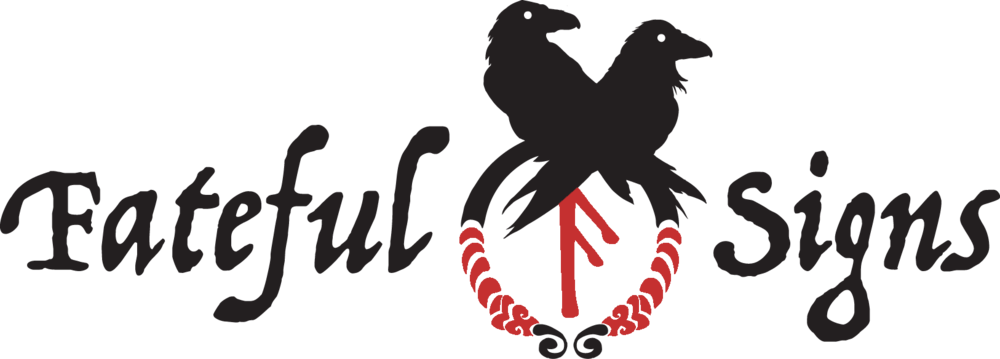Inking Process for The HávamáL
STEP ONE – Ink Blob
Each of my Hávamál drawings starts as an ink blob. Some days I think of the specific verse and let the ink fly, others I just let the ink fly. I listen to music and try to zone out. I use big brushes, little brushes, and even an old tooth brush. While the ink is still wet I’ll use paper towel or a pallet knife to wipe the ink around. The goal is to create random shapes.
STEP TWO – Inspiration
Each day I prepare the verse, print it out, and tack it up above my drawing table. I then go to my meditation table, light a candle, and do a meditation on the days verse. Once I feel things I right I go back to the studio and select the ink blob that seems to fit. I typically turn it several different ways to see what shapes I start to see. Here is the verse I was working from:
Othin for the gods, | Dain for the elves,
And Dvalin for the dwarfs,
Alsvith for giants | and all mankind,
And some myself I wrote.
Along with some notes from Bellows on the verse:
Dain and Dvalin: dwarfs; cf. Voluspo, 14, and note. Dain, however, may here be one of the elves rather than the dwarf of. that name. The two names also appear together in Grimnismol, 33, where they are applied to two of the four harts that nibble at the topmost twigs of Yggdrasil. Alsvith (“the All Wise”) appears nowhere else as a giant’s name. Myself: Othin. We have no further information concerning the list of those who wrote the runes for the various races, and these four lines seem like a confusion of names in the rather hazy mind of some reciter.
STEP THREE – Pencils
Staring at the ink blobs, while thinking about the verse I try to find shapes. I typically start with faces. With this verse I knew I needed Odin, an Elf, a Dwarf, and a Giant. As the verse speaks to the rune makers I wanted to include the runes as well. I struggled a bit to figure out what to do with the top shape. It kinda looked like clock hands at first. Then I realized it could be a knife carving, i.e. carving the runes.
STEP FOUR – Ink
Using a #0 Series 7, Winsor & Newton, Finest Sable brush and Liquitex Professional Acrylic Ink, I start to block in the various shapes. I usually start with a nose and work my way out. Sometimes things change from the pencils, but I’m not too strict. The point is to feel the line and let the piece emerge naturally.
STEP FIVE – More Ink
Using larger brushes I outline certain forms to make them more prominent. I also use Micron Ink Pens to do the eyes.
STEP SIX – White
I use Dr. Ph. Martin’s Pen-White to clean up mistakes and enhance the image with white. By this point the image is almost done!
STEP SEVEN – Line Work
In order to detail the image, I use a Micron 01 Ink Pen to add detail.
STEP EIGHT – Ink Wash
Using a #02 brush I water down some ink to add a bit a shading to the image. My goal is to enhance forms, pushing some things back in order to bring others forward. At this point I sign it and I’m done!









